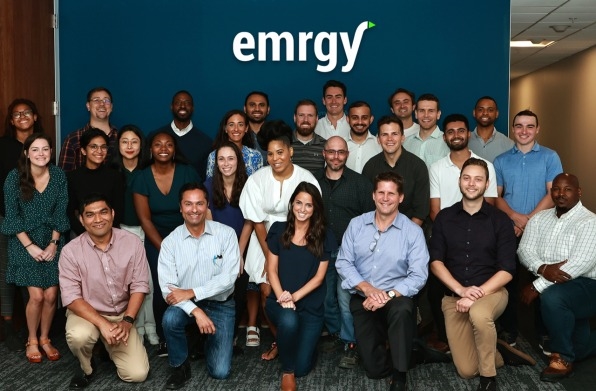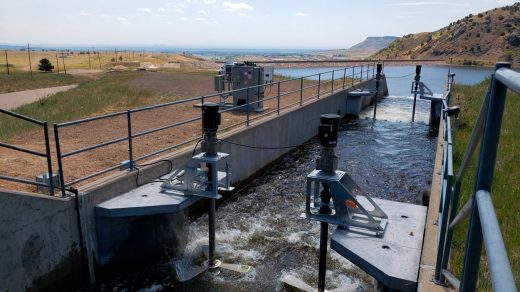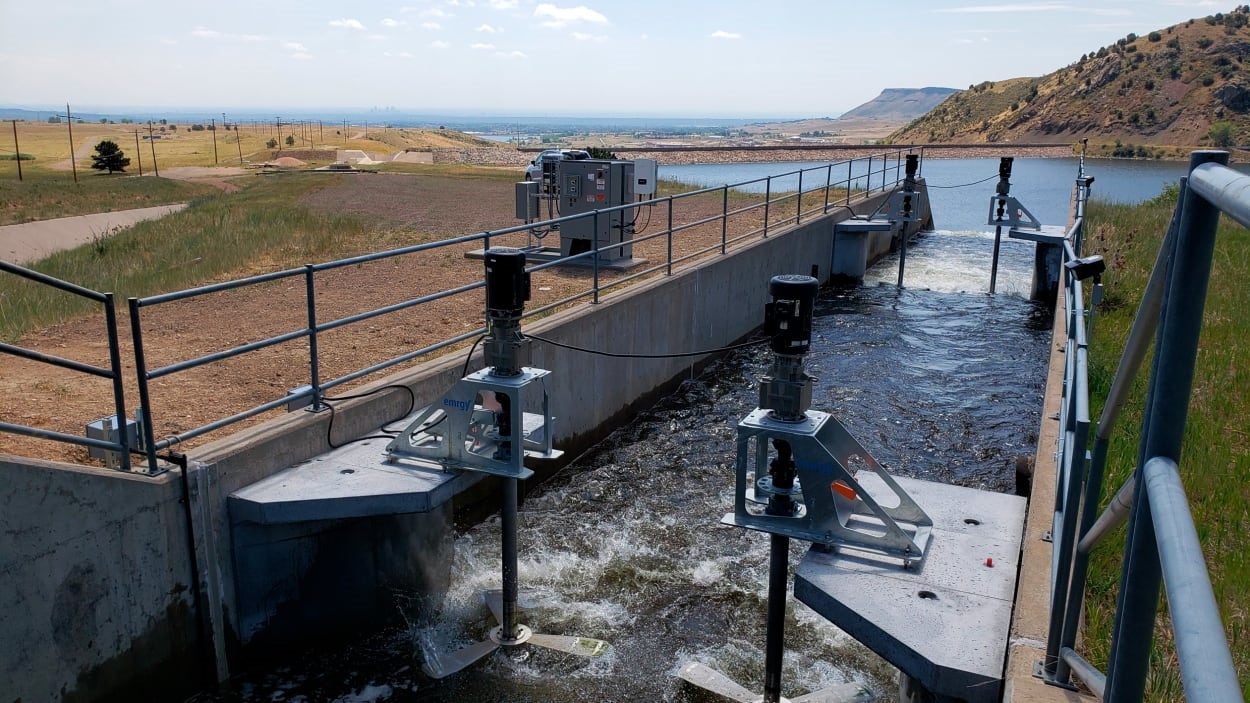This startup places tiny turbines in canals to generate power
Outside Denver, in a 9-mile-long canal that sends water to the local water treatment plant, small turbines spin as the water flows by. As they spin, they send energy to the water company so it can rely less on the electric grid.
This new iteration of hydropower looks nothing like a traditional dam. The company that makes the tech, called Emrgy, “wants to bring forth a solution that can be deployed just as quickly as solar,” says founder and CEO Emily Morris. Emrgy announced today that it raised $18.4 million in Series A funding led by Oval Park Capital.

Instead of working in natural waterways like rivers or streams—where dams have caused major environmental damage—the startup is focused on placing its small turbines in industrial infrastructure. Another installation is in an irrigation canal for agriculture in California’s Central Valley.
“Water infrastructure is considered a brownfield site, and installation can be permitted very quickly,” Morris says. On the shore, the turbines connect to off-the-shelf inverters that are used in the solar industry.
In California, where nearly 20% of the state’s electricity is used by water infrastructure, the devices could help begin to offset some of that demand. Each turbine has a power rating of between 5 and 25 kilowatts of electricity, depending on the depth and speed of the water; under the best conditions, one device can produce as much power as 60 or 70 standard solar panels.
While a system likely can’t supply all of the electricity each customer needs, a network of several turbines in a canal could make a difference. It could also be used in combination with floating solar panels in canals, providing a continuous source of power as the water flows.
The initial cost is higher than solar, but the technology can produce more energy as it works, so a small fleet can be cost competitive today, Morris says, adding, “We see this as an important tool in the toolbox to provide 24-hour generating power with other renewables.”
(9)



